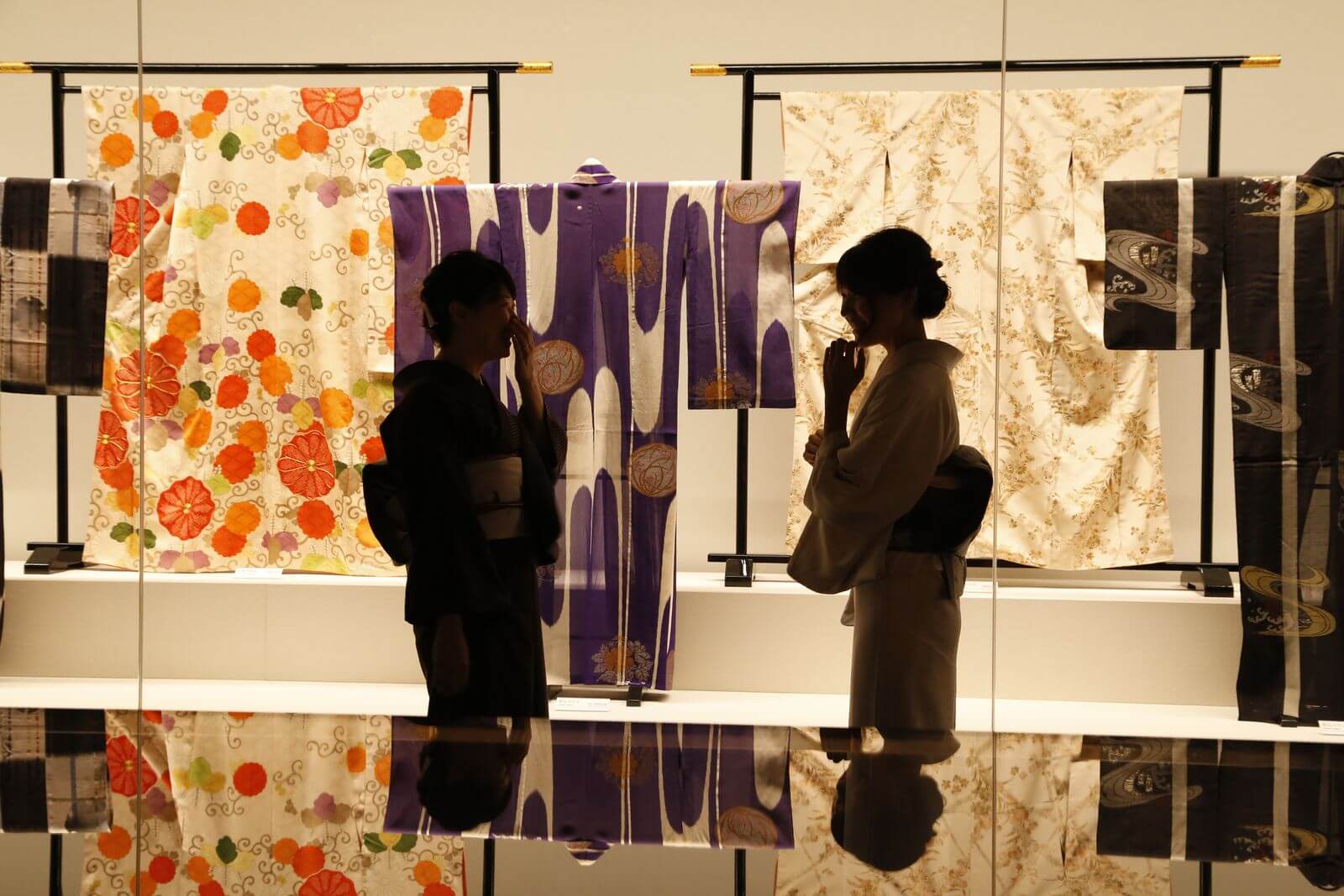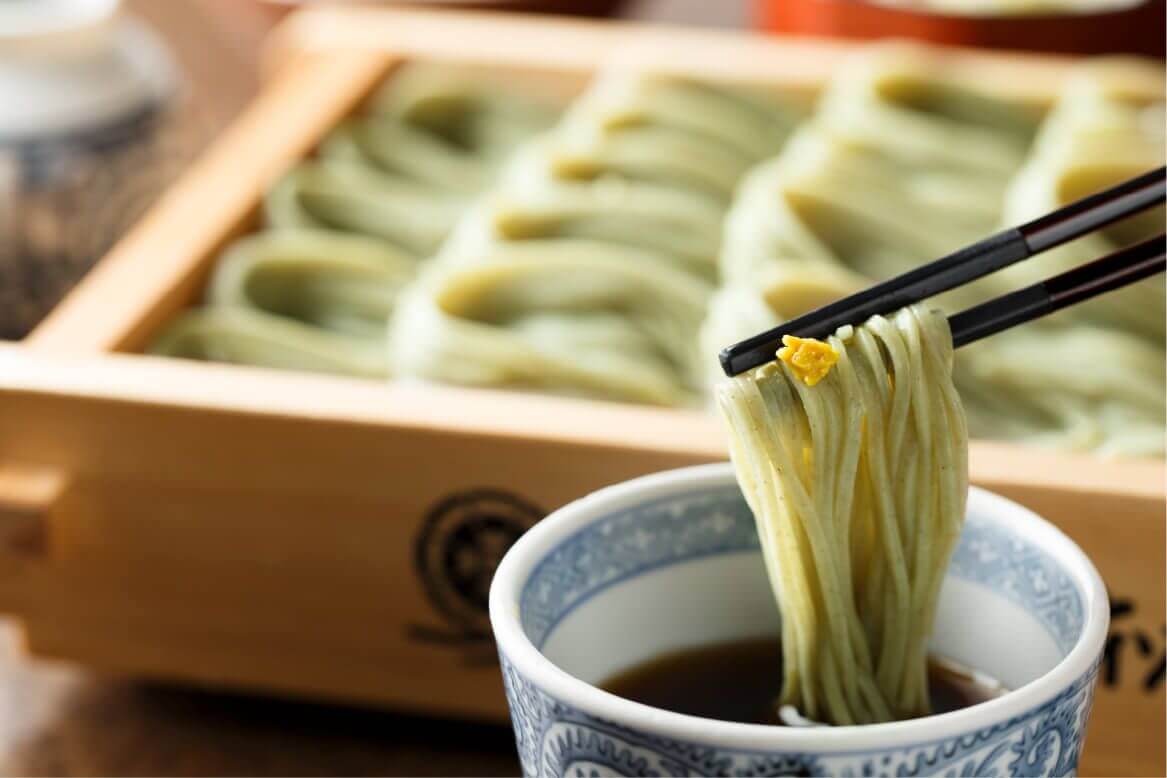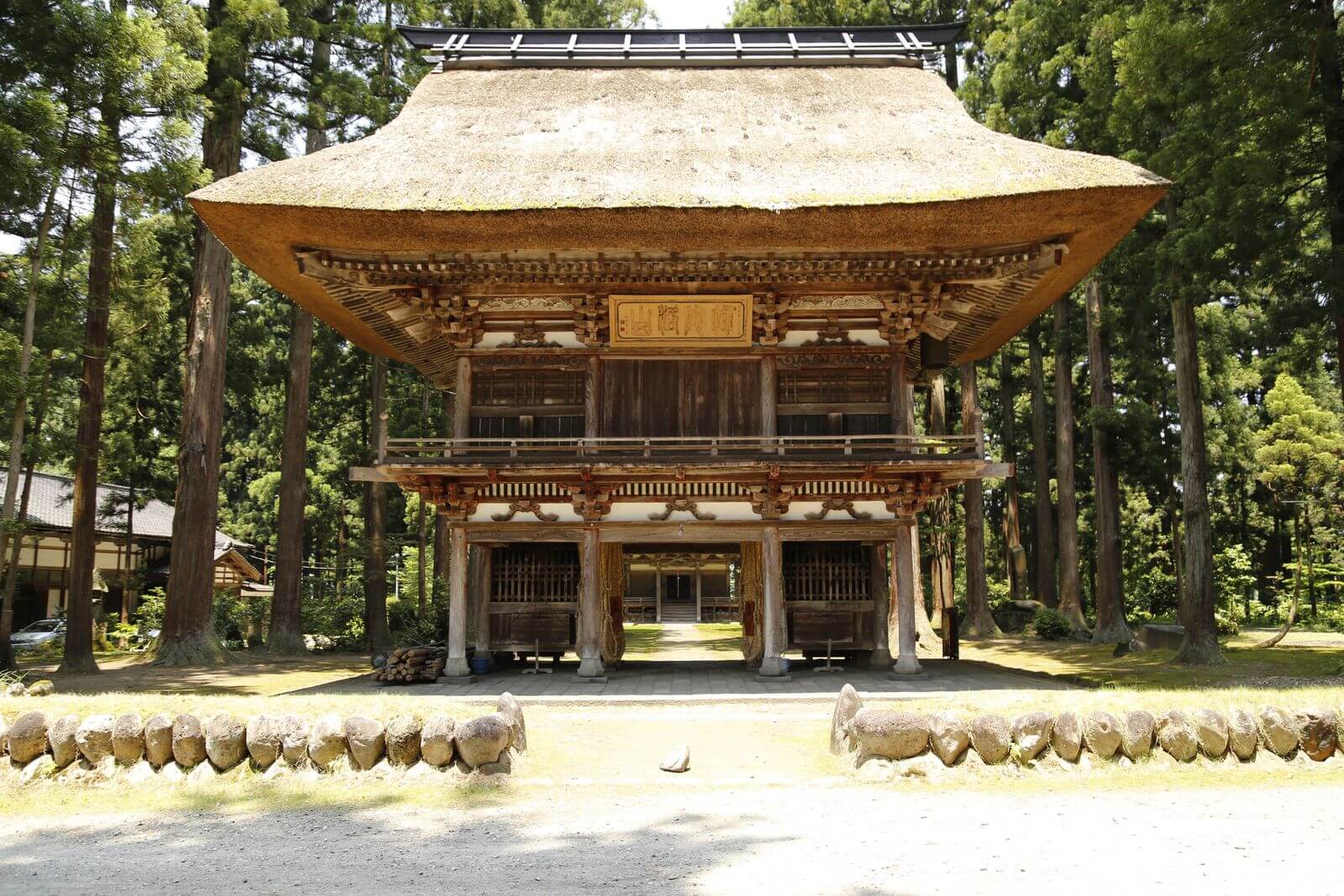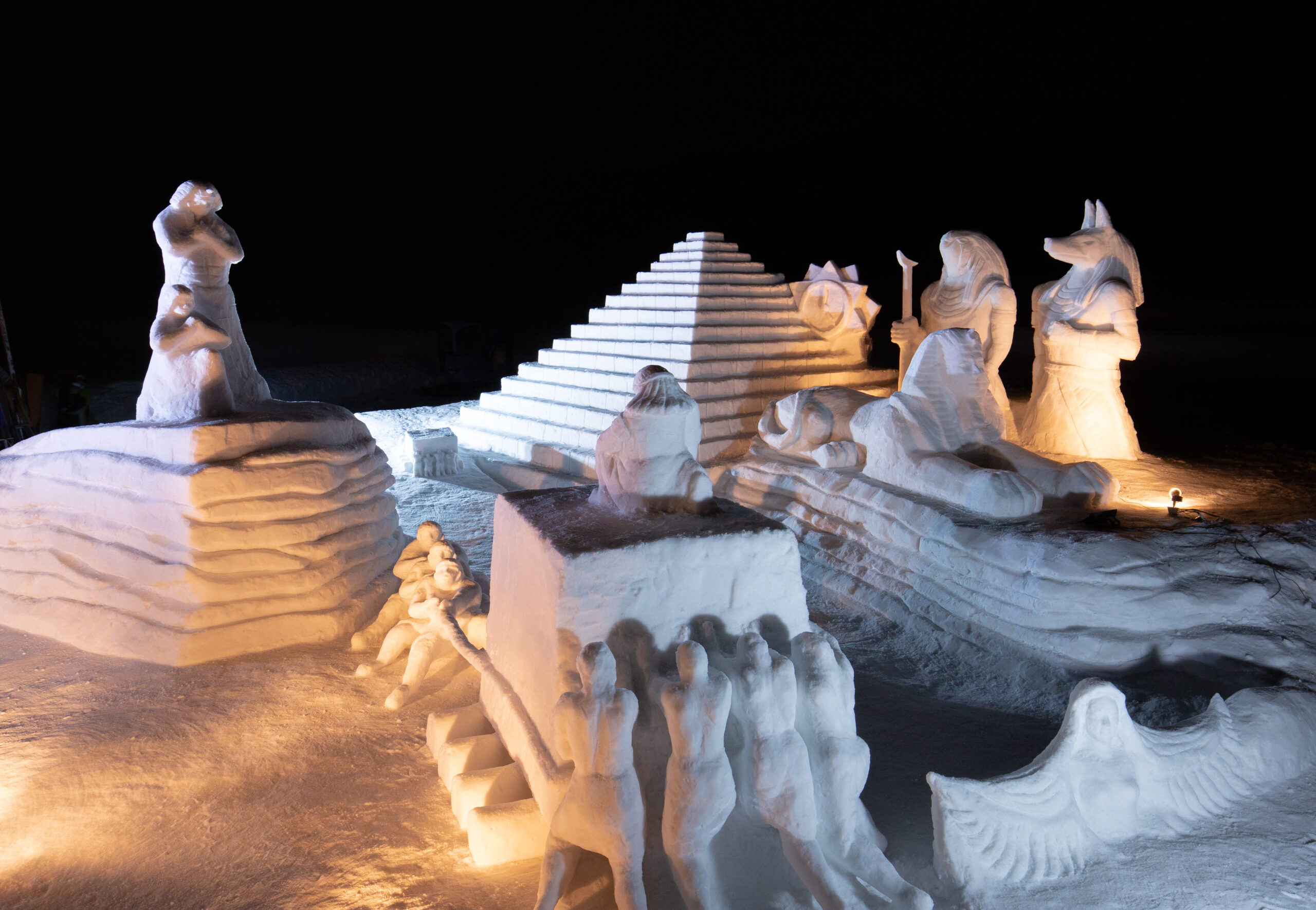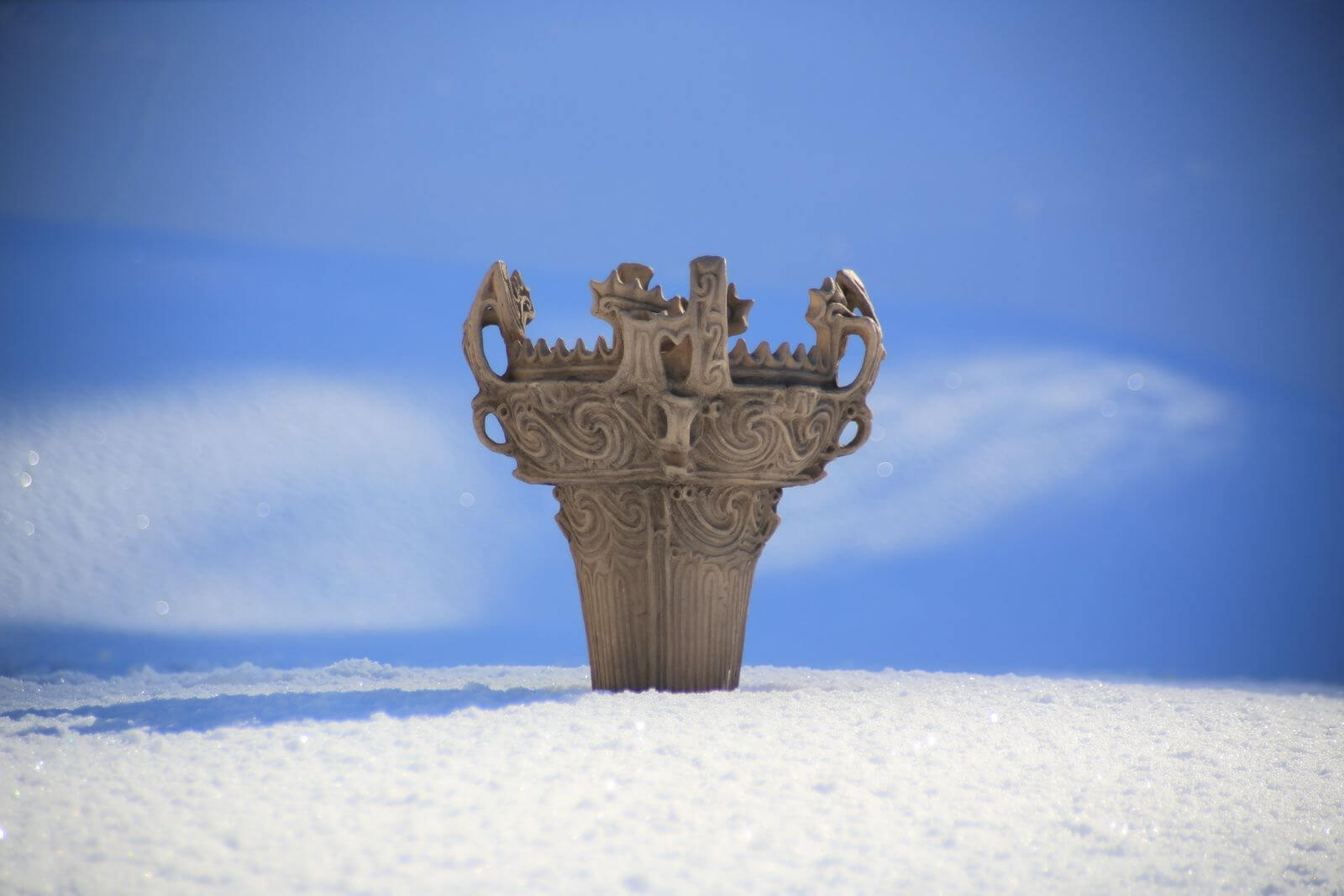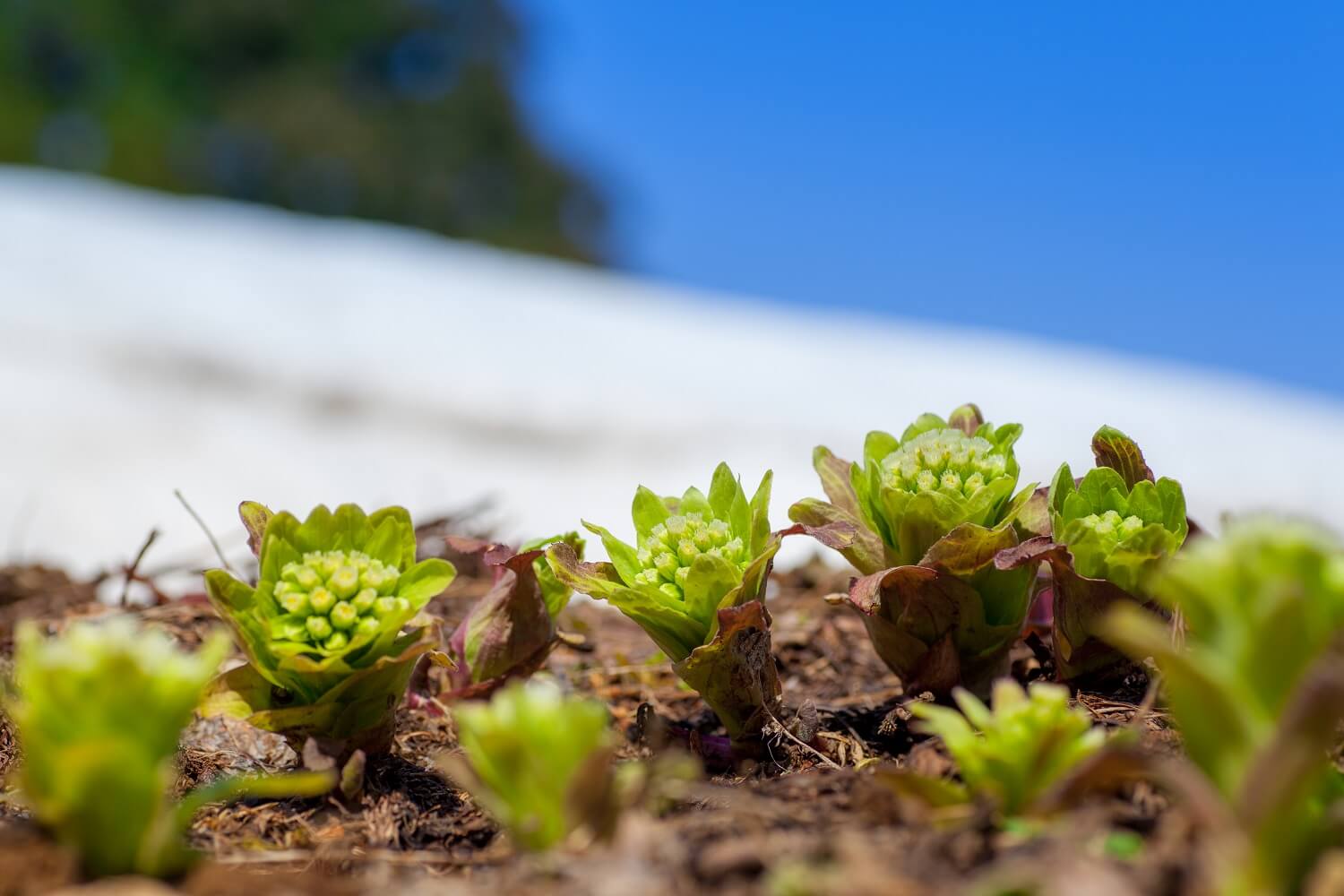Ultimate Snow Country
Tales of the Snow Country Kimonos
The production of high-quality hemp fabric known as “Echigo fu” has prevailed in this region since ancient times. Improvements were made to the fabric in the Edo period, and the resulting product, “Echigo chijimi,” was of far higher quality.
Making Echigo Chijimi
One 12-meter roll of Echigo chijimi would take several months to make. Echigo women, renowned for their patience, used their delicate and steady handywork to weave beautiful patterns for summer clothing in the winter, when outside work could not be done. A process known as “snow bleaching” to bleach threads and other clothes can only be done in an area where there are still heavy amounts of snow even in sunny spring.
From hemp to silk
Near the end of the Edo period, silk manufacturing and silkworm raising, known as sericulture, began to flourish even in Tokamachi. During the Meiji period, mainstream production pivoted drastically from aoso hemp fabric to raw silk. The production structure also changed – what was once a mere side business for farmers during the winter was now a factory-based industry, and silk textile production centers were established and continue operating to this day. The driving force behind these innovations was the people: those who were brought up to be patient in this area of heavy snow, and the willingness to strive for better products while adapting to current trends. This is how the kimono industry remains a cornerstone of Tokamachi City in the present day.
Tales of Snow Country Cuisine
In this region of heavy snow, the ground is covered in thick snow until about April. The vegetables sprout later, and fields cannot be cultivated due to the thick snow coverage. To fend off starvation during the long winter, residents go through great efforts to collect whatever they have harvested through autumn months and create a stockpile. Mountain vegetables and mushrooms are preserved in salt and dried. Vegetables like daikon radish are wrapped in straw and buried in the snow as a sort of freezing preservation. Additionally, excess snow was used to create “snow huts” and “snow pits” for cold storage to last until summer.
The Uonuma area, which includes Tokamachi City, has a flourishing rice cultivation process that makes full use of the snowy climate and topography, making it some of the best rice fields in Japan. The maintenance of the sloped rice field terraces, known as tanada, is largely in part to the heavy snowfall. In addition, “hegisoba” is made from funori seaweed used as a binding agent in textiles. This gives it a smooth, unique texture and outstanding flavor, making it a local specialty.
A typical winter preserved food known as “tsukena” (pickled rapeseed) is reborn as “niina,” or boiled vegetables, after the salt is removed and then stewed when the fermenting progresses in early spring and the acidity levels increase. People are able to survive the harsh winter thanks to the wisdom of their ancestors, who passed down this food culture as a local cuisine that makes the most of the bountiful nature in snow country.
Tales of Snow Country Architecture
People spend most of their time in their homes during a snow country winter. The house contains a workshop and it serves as a storage spot for food and fuel. Protecting such an important building from the snow is an exceedingly essential, never-ending theme for the people of snow country.
Not only does the building utilize thick columns and beams to create a strong structure, but there is also a steep, thatched roof and the farmhouse’s “gateway structure.” The gateway structure is built in such a way that it protects from the wall of snow coming into the house, and one must step over the gate to enter the house. The beams are extended to create a shape similar to the inside of a boat. These architectural styles are representative of our ancestors’ fight against the snow.
During autumn months, buildings are covered in wood planks to create a “snow shed” of sorts that will protect from impending snowstorms. Furthermore, snow removal at the roofs of these homes can prove hazardous and even fatal. Now in Tokamachi City, most houses are stilted and feature living areas on the second and third floors, along with roofs designed for easier snow melting, and many structures have been reinforced to withstand the heavy snow. Some homes are even snowproofed. Such snow country houses can only be attributed to the ingenuity of people who have lived among the snow.
Tales of Snow Country Festivals
The traditional events that happen in Tokamachi City can only come from a snow country. These include “groom throwing” (mukonage), where newlywed men are thrown from atop a snowy mountain, and snow huts known as “honyaradou.” The seasonal markets originally started as a way for farmhouses to sell off straw products and are still held now every January. Tiny little sculptures (dogs, the annual zodiac animal, etc) made out of rice flour known as “chinkoro” are sold as lucky charms at these markets are wildly popular.
The event with the most fanfare is undoubtedly the Tokamachi Snow Festival, which began in 1950 as a way to give some brightness to the residents during the harsh winters. Elaborate snow statues created during this time are actual “snow artworks” made by local residents who have learned everything they know as it was passed down to them by their ancestors. It is in these efforts that Tokamachi citizens helped each other in a show of solidarity, and the Tokamachi Snow Festival began from the idea of “let us befriend the snow rather than make it the enemy.” This wide variety of events and festivals make the snow more enjoyable, and therefore the white winters a little more lively.
Tales of Snow Country Beauty
The four seasons in Tokamachi show off a distinctively different view from one season to the next, with each providing a rich scenery. You can feel the wisdom and strength of the people who lived here in the past amongst the sprawling rice terraces in the satoyama land, and the beech forest that provided firewood. In addition, Tokamachi City hosts the “Echigo-Tsumari Art Trienniale” that occurs every three years and led to new creations in the satoyama landscape, including at Kiyotsu Gorge where contemporary art is blended with traditional nature.
There have been many artifacts excavated from the Jomon period, in particular the “flame-style pottery,” the overwhelming piece of work that to attracts viewers even 5000 years after it was created. The kimonos of Tokamachi City have been designed in a way that capture current trends and have been loved by people for over 1500 years. The beauty of Snow Country was borne from the creativeness of the people living in the winter stillness.
Tales of the Long-Awaited Snow Country Spring
Snow Country is blanketed in snow for approximately half of the year beginning every November from the first snow of the season. Spring arrives around April, when the snow finally begins to disappear and ground begins to peek through. The flowers bloom all at once, the buds on the beech trees break sprout, and the world transforms into one of life. As the “Tokamachi Kouta” song goes, “plums and cherry blossoms all open up” in an exciting way. But even from spring to fall, the people of Tokamachi City can’t shirk off their duties of preparing for the next winter. In no time at all the first snow will happen and they will be in for a long, white winter once more. In this way, even though the world drastically changes between seasons, life goes on as usual. The people of Tokamachi have fought the snow, accepted the snow, utilized the snow, became familiar with it, and even discovered how fun during their survival of snow country. Tokamachi City is the “ultimate snow country,” where the lifestyle of living alongside the snow and even befriending it are traditions that have been passed down from the Jomon period. We would like you to experience these authentic “Tales of Snow Country” for yourself as just one part of the profound Japanese culture.
